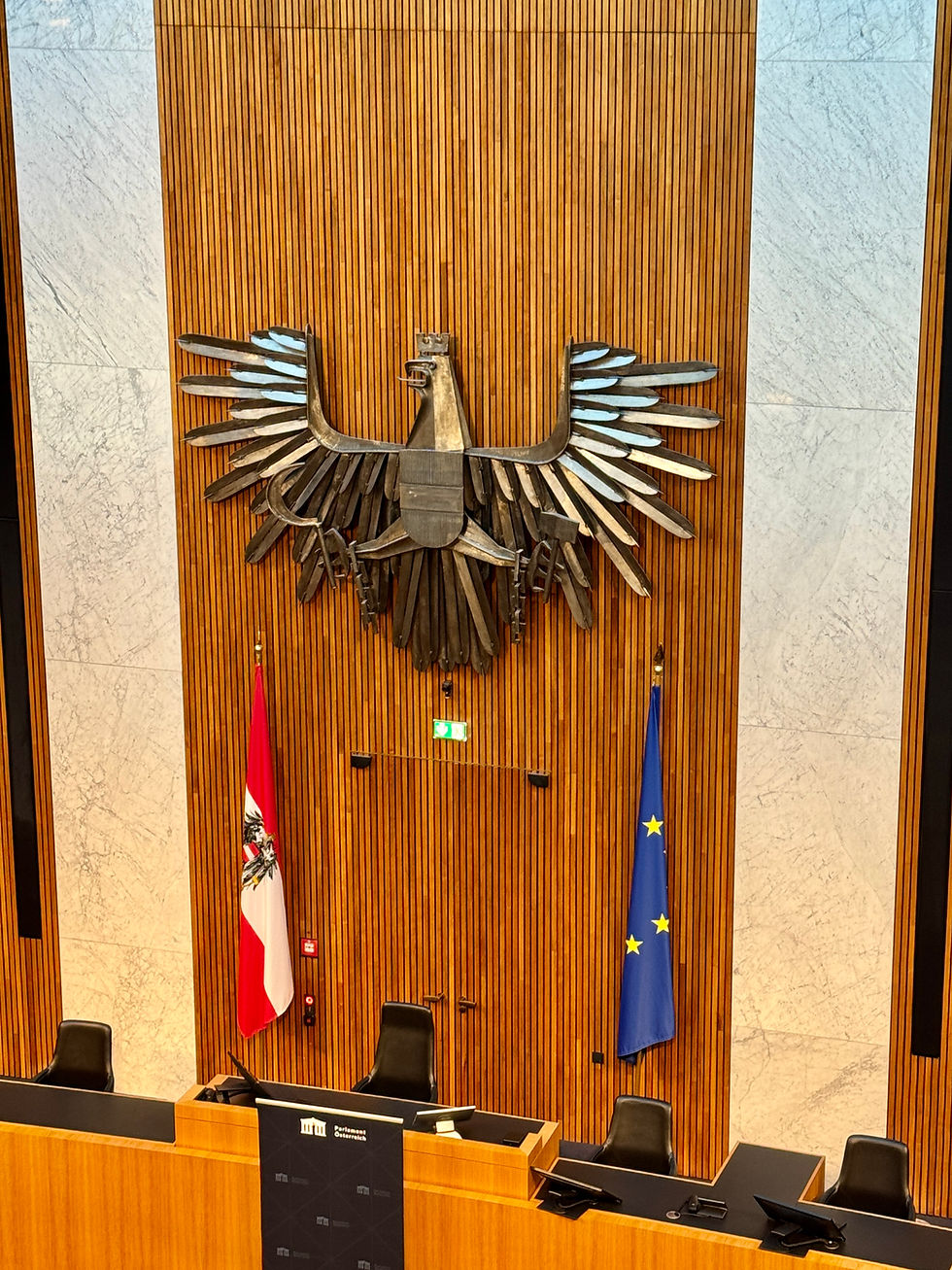Secession - The Original Home of the Viennese Art Nouveau
- Mika Vepsalainen
- Nov 12, 2022
- 4 min read
Updated: Apr 19, 2023
Join us for a visit to one of the most fascinating museums on the history of Art Nouveau in Vienna that gave the word for the movement in the Habsburg empire and much more - not to forget the unique chef d'oeuvre of Viennese Art Nouveau, Klimt's infamous Beethovenfrieze.

The Wiener Secession is an art movement, closely related to Art Nouveau in Vienna. In 1897, Austrian painters, graphic artists, sculptors and architects, including Josef Hoffman, Koloman Moser, Otto Wagner and Gustav Klimt wanted contacts and exchange of ideas with artists outside Austria, to dispute artistic nationalism and to create “total art” in opposition of the official dogma of the Vienna Academy of the Arts, the Künstlerhaus.
With Gustav Klimt as their fist president, the association, die Vereinigung bildender Künstler Österreichs Secession got their own gallery known as the Secessionsgebäude. Designed by Otto Wagner’s student Joseph Maria Olbrich, the Secession Building with its 8.5 metre wide cupola constructed from 2500 glided gold-plated iron laurel leaves became the symbol of the movement, being the first gallery completely dedicated to contemporary art in Vienna. The cupola is known among the Viennese as the “goldener Kohl", golden cabbage although earlier in 1898 it was rather compared with a buddhist temple, a mausoleum or even a crematorium.
The Nazis destroyed the Secession as it was for them a symbol of degenerate art but it was reconstructed after WWII. Klimt's world famous Beethovenfrieze was restored and can be seen there today again. Klimt had created the famous Frieze for the 1902 exhibition as a tribute to Beethoven. Symbolising the secessionists’ vision of a synthesis of the arts, it was based on Richard Wagner's interpretation of Beethoven's 9th symphony depicting humankind's search for happiness. It became one of Klimt’s key works and a highlight of Viennese Art Nouveau. The Frieze was later sold to a collector, Carl Reininghaus and later on to the Lederer family. Expropriated in 1938 by the Nazis, it was returned to the owners after the war and somewhat later, thanks to the efforts of the then Chancellor Bruno Kreisky, the Government purchased it in 1972. After many back-and-forths the restored fresco was returned to the Secession, this time on permanent loan from the Belvedere. See also our review of the Klimt Villa in Vienna where we highlight his work and art with some sad stories about the fate of his art and his models. (For more information on Klimt, check also the Albertina that started research and scientific classification of Klimt's drawings in a project called Gustav Klimt. Die Zeichungen that has now reviewed over 4300 works by Klimt.)
The impact of the Secession on the arts and culture in the former Austro-Hungarian empire has been enormous. In Vienna itself, the secession artists decorated two buildings of Wagner’s design, the Majolikahaus in Linke Wienzeile 40 and the House with Medallions in Linke Wienzeile 38 - go and see, the decorations are fairly easy to guess! After your visit to the Secession, you might also wish to check the main symbols of the Secession styles by Otto Wagner himself, the beautiful U-Bahn stations, the most famous being the Karlsplatz Stadtbahn Station that also happens to be the closest to the Secession.
Even more interestingly, a good part of the arts in the rest of the Habsburg empire got a permanent mark from the Secession as Art Nouveau in several countries is today called after the Secession: secese in Czech, szecesszió in Hungarian, secesja in Polish and secesia in Slovak! Austria still continues to celebrate the importance with the Secession Building on the Austrian fifty cent coin.
After the restoration in 1945, the name was shortened and the focus somewhat revisited. Thanks to its well aged architecture and its functionality and elegance, the Secession is now a leading host of contemporary art exhibitions in Vienna. The Secession Association remains the world's oldest independent exhibition space for contemporary art and Secession continues to fully fulfil its motto on the façade claiming "For every time its art. For art its freedom".
Moving around in the building in a wheelchair or with a pram is a bit complicated. There are a few steps to arrive at the main entrance but there is an elevator in the street at the left side of the building. You need to ring the bell for assistance. Also, the building is not fully accessible. The Beethovenfrieze and the main floor contemporary exhibitions are barrier free. The downstairs exhibition rooms are accessible by elevator but check beforehand as on our visit, the lift was out of order! Unfortunately, the first floor gallery can only be accessed through the stairs from the lobby. Visitors with disabilities get a reduced admission ticket and one assisting person gets a free entry. There are good loos, including one for the disabled accessible with the lift down to the Frieze.
There is an impressive museum shop with artists books, gifts, jewellery and much more. A definite must during your visit! Next to the museum shop, there is a nice locker room for your bag and umbrella.
There is no museum café in the building, but the famous Naschmarkt with its numerous food stalls and cafés starts right at the Secession, so take a look there after your visit to the Secession.
Association of Visual Artists Vienna Secession
Friedrichstraße 12, 1010 Vienna
secession.at










































Comments